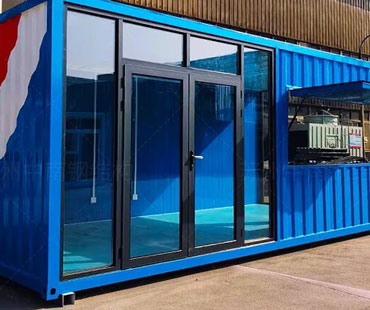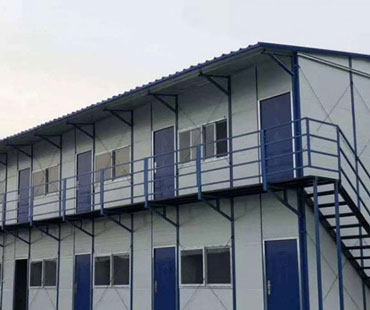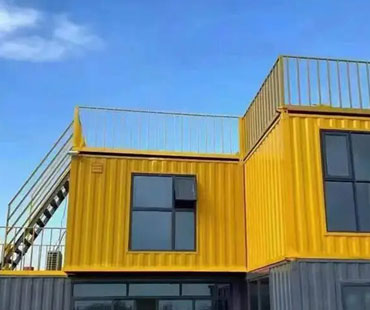In an era marked by rapid industrialization and globalization, the logistics sector has emerged as a critical component in the movement of goods across the globe. However, the environmental impact of traditional logistics practices has raised significant concerns. As a response, the concept of green logistics has gained traction, aiming to minimize the ecological footprint of logistics operations. Container solutions have played a pivotal role in this transformation, offering innovative ways to enhance sustainability in the supply chain.
Green logistics refers to the integration of environmentally friendly practices into logistics and supply chain management. This approach focuses on reducing energy consumption, minimizing waste, and optimizing resource use throughout the logistics process. The goal is to create a more sustainable system that not only meets the needs of businesses and consumers but also protects the planet for future generations.
Containers are at the heart of modern logistics, serving as the primary means of transporting goods across various modes of transport—sea, rail, and road. Their role in green logistics is multifaceted:
1.Standardization and Efficiency: Shipping containers are standardized in size and design, which allows for easy stacking and transferring between different modes of transport. This standardization minimizes loading and unloading times, reducing fuel consumption and greenhouse gas emissions associated with transportation.
2.Reusability: The durability of shipping containers enables them to be reused multiple times for different shipping needs. This reusability significantly decreases the demand for new manufacturing, which in turn reduces energy consumption and waste generation. By incorporating used containers into logistics networks, companies can further enhance sustainability.
3.Modular Design: The modular nature of containers allows for innovative applications beyond traditional shipping. Containers can be repurposed into eco-friendly storage units, mobile offices, or even housing solutions. This versatility supports sustainable development by providing alternative uses for materials that would otherwise contribute to waste.
4.Reduced Carbon Footprint: By optimizing container utilization—such as maximizing the volume of cargo loaded into each container—companies can reduce the number of trips needed to transport goods. This optimization leads to lower fuel consumption and emissions, playing a crucial role in minimizing the carbon footprint of logistics operations.
5.Integration with Renewable Energy: As logistics companies increasingly seek to incorporate renewable energy sources into their operations, containers can serve as platforms for solar panels and other renewable technologies. For example, solar-powered container terminals and warehouses can significantly reduce reliance on fossil fuels.

Several companies and initiatives worldwide exemplify the successful integration of container solutions in green logistics:
-Maersk’s Eco-Product Initiatives: Maersk, a global leader in shipping, has launched eco-products that offer more sustainable shipping options. By optimizing container shipping routes and investing in energy-efficient vessels, Maersk aims to reduce its carbon emissions significantly. Their commitment to sustainability is further evidenced by their goal to become carbon-neutral by 2050.
-The Port of Rotterdam: As one of the largest ports in Europe, the Port of Rotterdam has embraced green logistics by implementing a comprehensive sustainability strategy. The port utilizes automated systems for container handling, reducing energy consumption. Additionally, the port is investing in electric vehicles and shore power systems to minimize emissions from docked ships, demonstrating a commitment to environmentally friendly practices.
-Containerization in Rail Freight: Rail freight transport is inherently more energy-efficient than road transport. Companies such as BNSF Railway in the United States are leveraging containerization to enhance their green logistics strategies. By increasing the use of intermodal transport (combining rail and truck) and maximizing container loads, they reduce emissions associated with freight transportation.
Despite the benefits of container solutions in green logistics, several challenges remain. Regulatory frameworks must evolve to support sustainable practices; logistics companies need incentives to adopt greener technologies. Additionally, the initial investment in eco-friendly solutions can be a barrier for some businesses.
Looking ahead, the future of green logistics will likely involve increased collaboration among stakeholders, including manufacturers, logistics providers, and policymakers. Innovations in technology, such as blockchain for supply chain transparency and AI for optimizing routes, will play crucial roles in enhancing sustainability.
Green logistics represents a transformative shift in how goods are moved and managed across the globe. Container solutions are at the forefront of this movement, providing innovative and sustainable approaches to logistics challenges. By embracing practices that prioritize environmental responsibility, the logistics industry can significantly contribute to sustainable development, ensuring that economic growth does not come at the expense of the planet. As we continue to innovate and adapt, the potential for container solutions in green logistics will only grow, paving the way for a more sustainable future in global trade.


